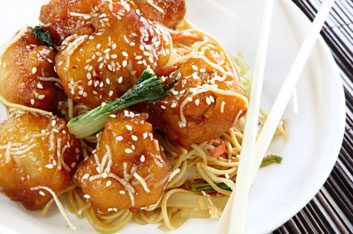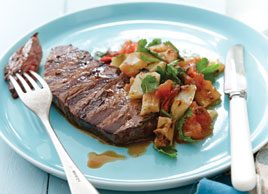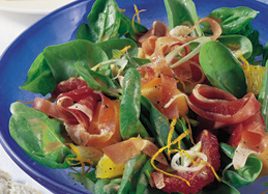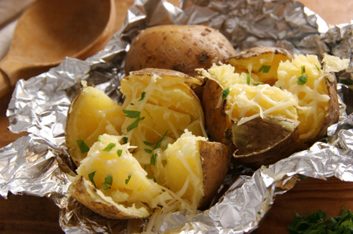
Dining out the healthy way
Whether you’re sitting down to a quick brunch or a multi-course dinner at a restaurant, navigating the menu can be a challenge-especially if you’re trying to eat healthy. But with a few dining-out secrets, you don’t have to miss out on a meal at your favourite spot.
“Sometimes people avoid restaurants when they’re watching their weight and that doesn’t need to happen,” says Rose Reisman, a nutritional consultant and author of Rose Reisman’s Family Favourites, who developed a healthy eating menu for the Pickle Barrel chain of restaurants in Ontario. “You should be able to eat out every day and still be able to watch your weight.” Read on to find out how to dine out with your health in mind.

Make the right choice
“The fancier the restaurant you go to, the less you get, which is better for you,” says Reisman. “Standard Italian restaurants or American restaurants are usually giving you double to triple the protein and carbs you need. Your plate should be 50 percent vegetables, 25 percent protein and 25 percent grains.” When it comes to ethnic food, Japanese, Thai, Greek and Indian restaurants are often easier on the waistline than Mexican, Chinese or Italian establishments because they feature grilled meats, non-fried options such as fresh spring rolls and guilt-free dips like Tzatziki. You’ll also find healthy sushi rolls at Japanese establishments-but always pick low-sodium soy sauce to dip your rolls in.

Learn the lingo
Gina Sunderland, a registered dietician in Winnipeg, advises clients to scan the menu for loaded words such as “pan-fried,” “crispy,” “dipped,” “scalloped,” “gratin,” and “alfredo.” “Dishes with those words have a lot of hidden fat and sodium in there,” she says. Instead, green light orders with words such as “grilled,” “steamed” and “baked.” “And I always tell people to read through the entire menu, rather than just settling on your favourite item right away. Explore the menu to see what your options are,” says Sunderland.

Remember Julia Child
“A chef is trained to use butter and salt to heighten flavours,” says Reisman. “And especially in better restaurants, they’re using tons of butter. In cheaper restaurants, they’re using tons of oil. Why? Because if you pour oil, butter, salt on anything, it tastes amazing.” If you’re concerned about the butter or oil content of your food, don’t be afraid to ask your server how the food is prepared. If you find that the dish you’re eyeing is loaded with oil, switch to something lighter.
Know your cuts
You’re craving some meat, so a hearty salad won’t do for dinner. Instead, pick leaner cuts of meat-a flank steak or filet mignon over a hulking rib-eye. Or opt for chicken breast-based dishes versus one with chicken thighs. Bonus points for skinless breasts-one chicken breast with the skin has eight grams more fat than without the skin.

Know your cuts
You’re craving some meat, so a hearty salad won’t do for dinner. Instead, pick leaner cuts of meat-a flank steak or filet mignon over a hulking rib-eye. Or opt for chicken breast-based dishes versus one with chicken thighs. Bonus points for skinless breasts-one chicken breast with the skin has eight grams more fat than without the skin.

Start your meal right
Kick your meal off with a tomato- or stock-based soup (rather than a calorie-rich cream-based one), or a salad. “And you don’t need to order diet dressings. Just ask for it on the side and apply no more than two tablespoons,” says Reisman. “To compare, they usually give you about 1/4 to 1/3 cup of dressing, which is about six tablespoons.”

Don’t be afraid to ask questions
Ask the waiter questions about how the food is prepared if you’re not clear. “Often waiters might, for example, say a soup is a lovely purée. Ask if there’s cream or butter in there and if they say they believe so, ask them to check, because that can make the difference of a few hundred calories,” says Reisman. “If you don’t ask, you really don’t know what you’re getting. I’ve seen restaurants where they cook the bacon and use the fat for dressing!”

Watch your sides
While rice dishes-think steamed white rice or rice pilaf-are better than their heavier counterparts, such as risotto, they can still be calorie landmines. “Rice is a good spot to hide a lot of oil and butter,” says Reisman. “I usually go for baked potato with a little dollop of sour cream, because it’s usually full fat. Get a bit of grated cheese and green onions on the potato and it’s fabulous.”

Tame your sweet tooth
If you’re not in the mood for sharing, pick lower-calorie dessert choices such as sorbets or non-dairy gelatos. “Or instead of getting a dessert, get a skim milk latte to sip over a period of time and keep the conversation going,” says Sunderland. “You want to patronize the restaurant and not just sit there, so reframe how you end the meal.”
Related:
• How mindful eating can help you lose weight
• 5 simple fixes for bad eating habits
• 8 ways to reduce your portions

Tame your sweet tooth
If you’re not in the mood for sharing, pick lower-calorie dessert choices such as sorbets or non-dairy gelatos. “Or instead of getting a dessert, get a skim milk latte to sip over a period of time and keep the conversation going,” says Sunderland. “You want to patronize the restaurant and not just sit there, so reframe how you end the meal.”
Related:
• How mindful eating can help you lose weight
• 5 simple fixes for bad eating habits
• 8 ways to reduce your portions
